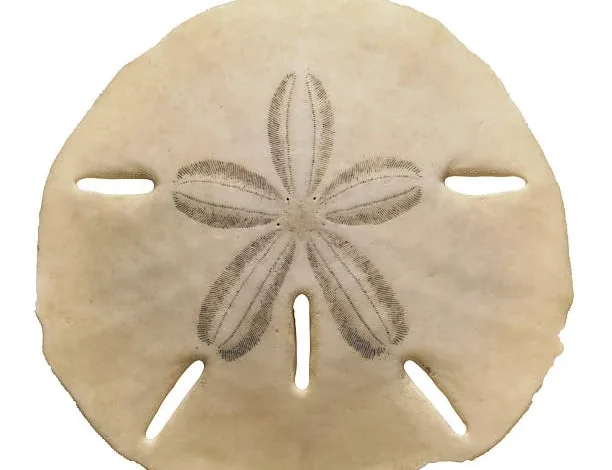
Sand Dollar
An Insight into One of Nature’s Most Precious Gifts
Sand dollars, common for their disc shaped sea shells are underrated in the ocean. Most of the time, they are found near the beach and are thought to be a mere shell on the shore. In this article, however, we examine the sand dollar in detail: its biological makeup, lifecycle, and importance in nature as well as civilization to mankind.
What Is A Sand Dollar?
The term ‘sand dollar’ refers to shallow-water animals with the scientific classification of Clypeasteroida Phylum class. They belong to the echinoderms group which comprises of sea stars, sea urchins and sea cucumbers The radially symmetrical balance and the water-filled vascular system used for locomotion and nutrition are found in these flat-bodied invertebrates. The disc-like shape of the sand dollar is due to the evolutionary changes which allows the organism to burrow inside sandy substrates and avoid predation.
Physical Features
A sand dollar has a disc shape and a size of about 5 to 10 centimeters in diameter though some may grow larger. Sand dollars are mostly characterized by a unique star like pattern engraved in their upper surface which consists of a number of modified breathing openings. When alive, a downy sand dollar contains fine spines along the
help it move along the ocean floor and trap food particles. These spines are often lost when the creature dies, leaving behind the familiar smooth, white skeleton that is commonly found on beaches.
The inside of sand dollar shells is quite complicated. The Star-shaped Aristotle lantern, is one of the most prominent and unusual mechanisms consisting of five teeth. The sand dollar adds both the water and the sediment particles with it while scraping these off. Sand dollars have special water vascular systems for movement and respiration, and water is taken into the body through the madreporite structure.
The Lifecycle of a Sand Dollar
Interesting aspects include the life cycle of a sand dollar, which commences with its larval stage also called a pluteus. During this stage, the larvae are part of the plankton and as such they are carried for several weeks by the waters until they settle to look for the ocean’s floor. Once the larvae settle down, they are transformed into juvenile sand dollars. They are still able to dig into the sea’s ring- where they stay for the better part of their lives, even as they progressively grow.
Reproduction
When the sand dollar reproduces, it disperses its eggs and sperm into the water. These gametes are then fertilized in the hired gut. This usually takes place in groups and increases the possibilities of fertilization, Hence, the eggs get fertilized and resulted in larvae of this which are released into the water body as free swimming.
begin their transformation into adults. It’s worth noting that sand dollars have a relatively slow growth rate, with individuals taking several years to reach maturity.
Dietary Habits and Feeding Patterns
Their habitat total, sand dollars have much aesthetic value in the sea floor habitat. Sieving through ocean sediment with its spines and cilia, they extract microscopic algae, detritus, plankton and particulate matter. Their mouth is the one found at the dominant side of their bodies and although it does not have any external orifice, it contains dentition in the form of an internal Aristotle’s lantern which scrapes food off the substratum and sweeps the particles on the mouth for digestion. This absorption of organic material not only serves the purpose of feeding the sand dollar but also nettles up the sandy surfaces of the ocean bed in a way that it converts foreign organic matter into cytoplasm.
The Place of Sand Dollars in a Different Ecosystem
As such, sand dollars are also important organisms in the ocean’s health and stability of the benthic community. In feeding and burying themselves into the sea floor, they incorporate excavation and thus facilitate sedimentation processes, enabling aerobic bacteria to flourish. In addition to this, scavenging sand dollars contribute to nutrient cycles by grazing detritus, which is central in the balance of the oceanic biosphere.
Predators and Threats
Sand dollars, despite their hard exoskeleton, cannot escape predation of several marine creatures like fish, sea stars, and crabs. They often seek refuge by submerging themselves in the sand with only a small portion of their body exposed, however this is not the case when it comes to human beings.
and overharvesting. The collection of sand dollars for souvenirs and decorative purposes has led to a decline in some populations, highlighting the need for conservation efforts to protect these unique creatures.
Cultural Meaning of Sand Dollars
Apart from the ecological contributions of sand dollars, they have a cultural dimension and mythology as well. In many coastal settlements, the sand dollar is regarded as a token of peace, calmness, and unity of life. The fragile frameworks of sand dollars, also known as “holy shells” are sometimes incorporated into jewelry and art and are frequently associated with religious meaning.
Symbolism and Folklore
Among the many stories and fables explaining sand dollars, the most frequently mentioned must be the bit of it related to Christianity. A folktale explains that the star on the sand dollar depicts the Star of Bethlehem while five notches on the back depict the five wounds of Christ. Moreover, when the sand dollar is dismissed, a hollowing can be seen in the form of five doves inside which symbolizes peace. This elaborate symbolism has led sand dollars to be a common item utilized in religious art and literature.
Economic Value
Aside from their cultural importance, sand dollars also have economic advantages. These are usually found in tremendous amounts in souvenir shops and are also utilized for various crafts and decorations. Nevertheless, taking any live sand dollars is detrimental to their numbers as well as to the health of the marine environment.
Many regions have implemented regulations to protect sand dollar populations, emphasizing the importance of responsible and sustainable practices when interacting with these creatures.
Conservation of Sand Dollars
The preservation of sand dollar populations is essential for maintaining the balance of the marine ecosystem. As with many marine species, sand dollars are vulnerable to the effects of climate change, pollution, and habitat destruction. Rising sea temperatures and ocean acidification can affect their reproductive success and the integrity of their skeletons, making it more difficult for them to survive.
Protective Measures
To protect sand dollars and their habitats, several conservation measures have been put in place. Marine protected areas (MPAs) help safeguard important sand dollar habitats from human activities such as dredging, fishing, and coastal development. Additionally, public awareness campaigns and education programs aim to inform people about the ecological importance of sand dollars and the need to protect them. By promoting sustainable practices and reducing human impact on marine environments, we can help ensure the survival of sand dollar populations for future generations.
Conclusion
Sand dollars are more than just a beautiful shell on the beach; they are a vital part of the marine ecosystem with a rich cultural and ecological significance. Understanding their biology, lifecycle, and the threats they face is crucial for their conservation. As we continue to explore and appreciate these remarkable creatures, it is our responsibility to protect them and the delicate balance of the marine environment they inhabit.


